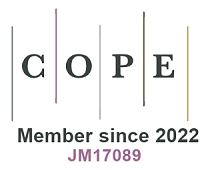
Topic: Duchenne Muscular Dystrophy (DMD): Progress in Research and Insights
A Special Topic of Rare Disease and Orphan Drugs Journal
ISSN 2771-2893 (Online)
Submission deadline: 31 Mar 2025
Guest Editor
Special Topic Introduction
Duchenne muscular dystrophy (DMD) is the most common genetic disorder diagnosed in childhood, affecting approximately one in every 5,000 live male births. DMD is caused by mutations in the Dystrophin gene that normally encodes for the dystrophin protein, a key component of the skeletal muscle and cardiac membrane, providing mechanical support and interacting with multiple proteins involved in maintaining the health of the myocyte. The muscle in DMD patients either contains no dystrophin protein or has a dysfunctional protein that fails to fully protect the myocyte from damage, inducing a cycle of degeneration followed by incomplete regeneration and scar tissue formation.
Gene therapy can benefit patients with DMD by transferring truncated versions of the dystrophin-producing gene into the muscle cells where no functional dystrophin is produced. Notably, an AAV gene therapy known as ELEVIDYS (delandistrogene moxeparvovec-rokl) was approved in 2023 in the United States, indicated for ambulatory pediatric patients aged 4 through 5 years.
In this Special Issue, emerging research developments are explored and reviewed, with special attention to next-generation AAV-based technologies that address the limited packaging size of AAV vectors, next-generation AAVs that increase the efficiency of viral delivery to muscle cells, to potentially enable lower total AAV doses, and the use of muscle-specific expression cassettes for high expression levels of therapeutic cargo. Other topics covered include new advances in potency assay technology for DMD, regulatory strategies that can influence the design of clinical DMD trials, patient involvement in funding research and innovation, and new research exploring non-viral mechanisms for large gene delivery to muscle and heart tissues.
Gene therapy can benefit patients with DMD by transferring truncated versions of the dystrophin-producing gene into the muscle cells where no functional dystrophin is produced. Notably, an AAV gene therapy known as ELEVIDYS (delandistrogene moxeparvovec-rokl) was approved in 2023 in the United States, indicated for ambulatory pediatric patients aged 4 through 5 years.
In this Special Issue, emerging research developments are explored and reviewed, with special attention to next-generation AAV-based technologies that address the limited packaging size of AAV vectors, next-generation AAVs that increase the efficiency of viral delivery to muscle cells, to potentially enable lower total AAV doses, and the use of muscle-specific expression cassettes for high expression levels of therapeutic cargo. Other topics covered include new advances in potency assay technology for DMD, regulatory strategies that can influence the design of clinical DMD trials, patient involvement in funding research and innovation, and new research exploring non-viral mechanisms for large gene delivery to muscle and heart tissues.
Submission Deadline
31 Mar 2025
Submission Information
For Author Instructions, please refer to https://www.oaepublish.com/rdodj/author_instructions
For Online Submission, please login at https://www.oaecenter.com/login?JournalId=rdodj&IssueId=rdodj2411301942
Submission Deadline: 31 Mar 2025
Contacts: Stella Wang, Assistant Editor, [email protected]









